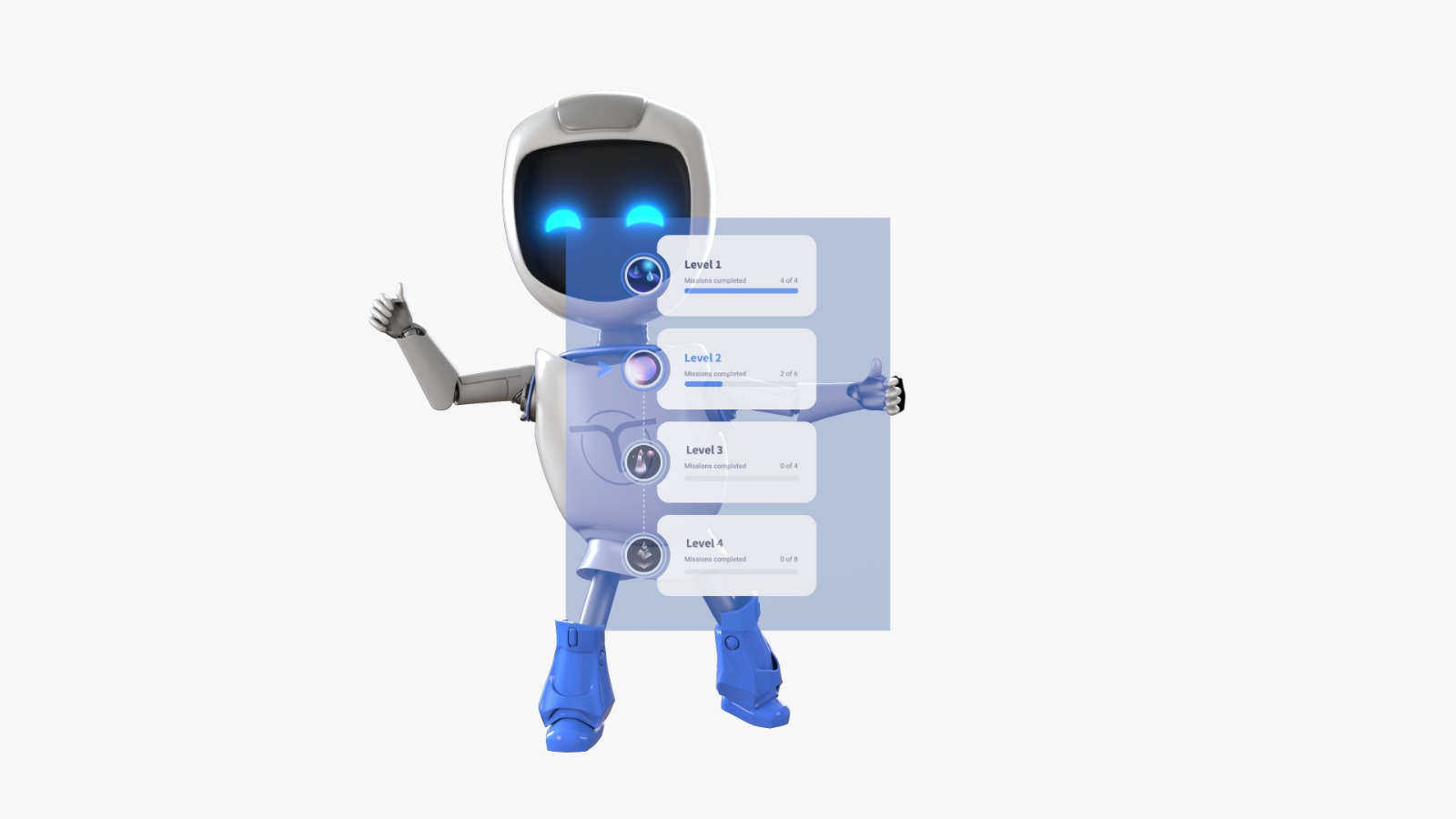[vc_row][vc_column][vc_column_text]For both managers and their teams, the pace of change has felt overwhelming in 2023. Developments in AI have dominated headlines and captured businesses’ imagination with their promise of unprecedented productivity gains and disruptive potential. But beyond the AI revolution, shifts in employee behavior and expectations have also continued to shape the effectiveness of corporate L&D programs.
Identifying how the L&D practices are set to evolve will be crucial in staying ahead of the curve and ensuring that your employees reach their full potential.
“Change” is likely to show up more in L&D strategy headlines
As organizations grapple with the challenges of a rapidly evolving business environment, L&D departments are stepping up to the plate, embracing new technologies, and reimagining their approach to training and development. The story of strategic change is one of innovation, collaboration, and a renewed focus on the needs of the modern workforce.
Rapid industry-shaping changes will compel a shift from generic and clunky e-learning courses to personalized, agile, bite-sized microlearning experiences focused on real-life skill development and job-related goals. The very approach towards L&D will evolve to meet the challenges and opportunities brought by the increasingly volatile market environment.
A recent report by the Chartered Institute of Personnel and Development (CIPD) revealed that recruitment, mobility, and turnover continue to be echoed by learning practitioners as key workforce priorities.
The post-pandemic Great Resignation has exposed the shifting expectations of employees. They are demanding more and more from their companies in terms of skills development, work satisfaction and career prospects.
These demands are not going to recede, especially as the pace of change brought by technological disruptions is accelerating. Unsurprisingly, in 2023, the top concern of L&D professionals consulted by the CIPD was addressing the skills gap.
[/vc_column_text][vc_row_inner][vc_column_inner width=”1/2″][vc_single_image image=”3405″ img_size=”500×500″ alignment=”center”][/vc_column_inner][vc_column_inner width=”1/2″][vc_column_text]According to research featured in the World Economic Forum’s 2023 Future of Jobs Report, employers estimate that 44% of workers’ skills will be disrupted in the next five years. This disruption will not be linear, and changes may happen in quick succession and at unexpected times. In order to retain an adequately trained, motivated workforce, HR managers will need to update their L&D programs at pace.
AI-generated microlearning programs offer the agility needed in the current fast-paced climate when the slow, manual creation of a traditional e-learning course can mean that it is already starting to be outdated by the time it is rolled out at scale.
Let’s say that an employee flags a knowledge or skill gap that his peers face at an end-of-day meeting. Generative AI solutions can now ensure that everyone can join a bespoke interactive course the very next morning. This could cover all the issues raised and give everybody the opportunity to perform at their best.[/vc_column_text][/vc_column_inner][/vc_row_inner][/vc_column][/vc_row][vc_row][vc_column][vc_column_text]
Preparing for takeoff: Generative AI will become embedded in L&D
If 2023 was the year when generative AI burst in the public consciousness and its enormous potential became clear to everyone, 2024 is set to be the year in which concrete applications of AI innovations will come of age.
Polls carried out by Gartner across 2023 showed a major increase in organizations piloting generative AI. In a report published in October, Gartner showed that 45% of the 1400 companies surveyed were in piloting mode with generative AI. This is up from only 15% in March the same year.
Until recently, businesses used AI in L&D and broader HR processes in predominantly experimental fashion. However, focused adoption is expected to gather pace in 2024. According to a survey conducted by McKinsey, AI “high performers”, or companies where respondents said that at least 20 percent of EBIT in 2022 was attributable to AI use, were employing AI more often for uses within HR such as performance management.
Generative AI offers unprecedented innovations in virtually every area of L&D. This ranges from relevant, articulate content generation at a snap of a finger to precision learning and evaluation. Got a new product launch in 2 weeks? AI could design an interactive microlearning program for your sales teams in seconds.. Need to teach updated health and safety protocols to employees? AI can lay out all the key changes in approachable, bite-sized courses generated in less than a minute.
HR executives are increasingly realizing the enormous potential of generative AI applications. These are here to stay, and not adopting these solutions in Learning and Development processes from curriculum design to skills assessment will mean falling behind in the race towards enhanced productivity and competitiveness.
Learning to measure L&D in terms of value and impact
For many companies, corporate training and development represents the second-largest staff expense after employee payroll. With the advancement of analytics and increasing business pressure, more and more HR and L&D managers are recognizing the need to integrate business evaluation measurements into their L&D programs, placing knowledge application at the core of courses offered to their teams.
In time, it will become indispensable to incorporate the evaluation of business results and behavioral change into every L&D process. This will be essential in making sure that the trainings offered remain fit for purpose, and that the company remains competitive.[/vc_column_text][/vc_column][/vc_row][vc_row][vc_column width=”1/2″][vc_column_text]Learning and Development programs have been known to be extremely expensive and to generate poor return on investments for the firms initiating them. Even though L&D practitioners state that they are concerned about measuring the impact of learning, only 50% of respondents agree that they have a process in place for assessing learning impact (CIPD).
Business leaders will continue to seek to make their expensive L&D programs more cost-effective and fit for purpose.Evaluating what works and what doesn’t will be a central element in this. However, the traditional disjointed view towards trainings and knowledge evaluation as two distinct processes continues to hamper such efforts. Fortunately, there is a noticeable shift in approach, with gamified assessments being increasingly integrated at the core of L&D programs and offering valuable performance data to HR managers. [/vc_column_text][/vc_column][vc_column width=”1/2″][vc_single_image image=”3406″ img_size=”500×500″ alignment=”center”][/vc_column][/vc_row][vc_row][vc_column][vc_column_text]
Keeping the eye on the ball
In a world of constant change, boiling down the multiple challenges to their most essential components will be key in keeping a focused and adaptable strategy. Admitting that change is a constant is a first step – this needs to be reflected in all approaches towards L&D processes: everything is changing, and everything is changing fast. All tasks in the L&D checklist will need to become more agile to allow for timely readjustments. Thankfully, a second core 2024 trend will come to rescue: the widespread adoption of generative AI platforms will scale up the ability of L&D departments to design and deliver training programs. Lastly, in all this, evaluation will be key: AI models will both encourage and enable a clearer understanding of employees’ needs and performance, and in turn a delivery of more targeted and effective programs.
Why not get a taste of the future?
Our award-winning microlearning platform, Code of Talent, has the ambition to make L&D programs fit for the future. You will be able to test-drive an AI-powered microlearning solution designed to easily create personalized training focused on acquiring and applying new knowledge and skills. Performance measurement is a key component of our vision.
You can try it now for free by clicking here.[/vc_column_text][/vc_column][/vc_row]






